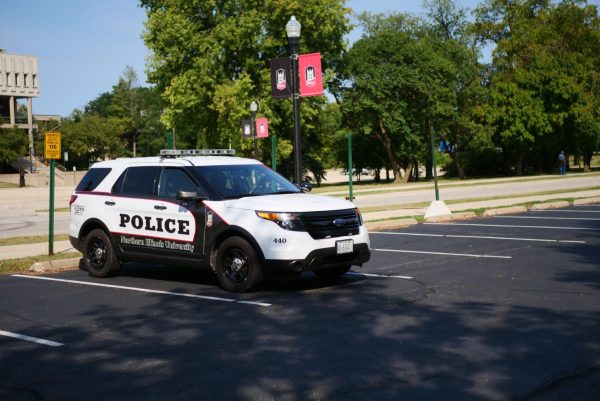HPV common, but symptoms aren’t always visible
April 23, 2007
DeKALB | According to the Food and Drug Administration, at least 50 percent of all people who have had sex will have human papillomavirus (HPV) at some point in their lives.
To many, these statistics are alarming. Many also wonder why they haven’t heard of it sooner.
“HPV is not a new virus,” states the FDA’s Web site. “But many people don’t know about it.”
What is HPV?
HPV is a virus that affects both men and women. While there is no known cure, the body’s natural immune system usually clears HPV up on its own.
Kimberley Ontiveros, 32, of Chicago, recently found out she has a strain of HPV.
“Because of all the TV commercials, when they told me I had HPV. it was scary,” Ontiveros said. “I didn’t know how many people have it and a lot of people do.”
There are more than 30 strains, or types, of the virus, each having different effects. Not everyone with HPV shows symptoms, though sometimes they appear in the form of warts.
“Types 6 and 11 cause genital warts, which are just a nuisance,” said Carol Sibley, nurse coordinator for preventative medicine within Health Services.
“In certain cases, however, the virus causes changes that can develop into cervical cancer,” she said. “Two strains [Types 16 and 18] are responsible for over 70 percent of cervical cancer.”
How is HPV transmitted?
Although HPV is categorized as a sexually transmitted infection (STI), sexual intercourse is not the only way it can be transmitted. Sibley warns that HPV can be contracted through close contact.
“Close contact does not always equate with sexual contact,” Sibley said. “HPV can be contracted through contact in places where the virus is already located. But it may not always be visible. It can be so subtle.”
For this reason, she also warns that just because there are no visible signs that does not mean the virus isn’t present. Any transfer of infected mucus membranes can lead in contraction.
Preventing HPV
The pharmaceutical company Merck has recently released a vaccine, Gardasil, for women ages 9 to 26. The vaccine prevents the four main types of HPV, Types 6, 11, 16 and 18.
“They targeted these [four strains] because they know that they have the biggest impact on the most people,” Sibley said.
The Gardasil vaccine needs to be taken in three doses. All doses are currently available at NIU Health Services. Students can get it at a reduced price of $130 a dose.
Sibley said other offices charge over $200 a dose, but some insurance companies may cover some of the cost.
Kristin Corbett, sophomore elementary education major, recently received the vaccine.
“I think that everyone in our age group should definitely get it because the majority of us are sexually active,” said Corbett. “I feel like that because my mom had it for 20 something years and they didn’t catch it. If everyone got a simple shot, there wouldn’t be a problem like developing cervical cancer later.”
Sibley said even if some people have a strain of the virus they should still consider getting the vaccine to prevent other strains.
“Just because you have a strain doesn’t mean that you shouldn’t get the vaccine because odds are you don’t have all four,” Sibley said.
Some criticize the vaccine for being targeted to school-aged children who are not sexually active yet.
“The goal is to catch people before they’re sexually active so they can prevent those four strains,” Sibley said.












